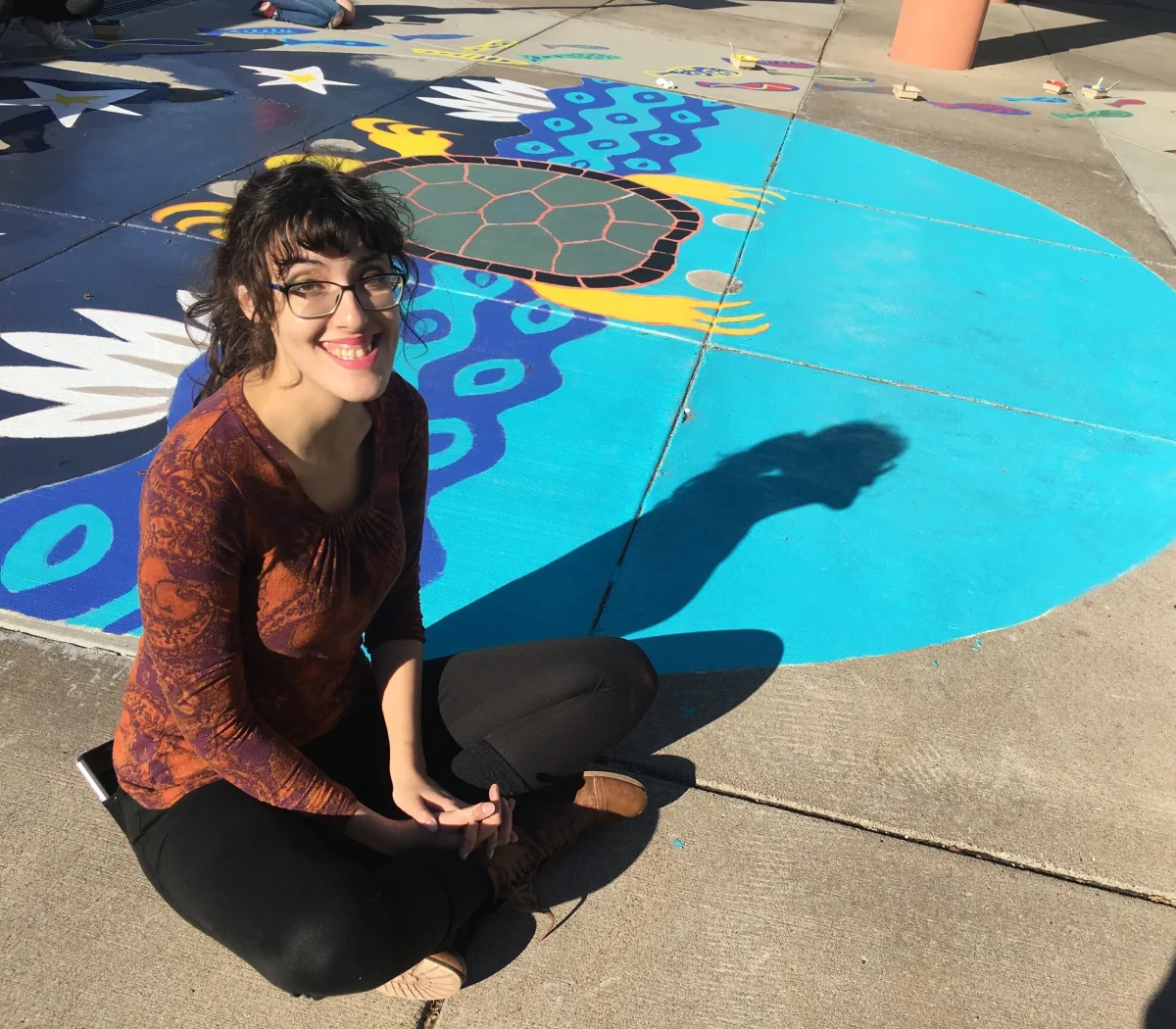Artist Moira Villiard hosted UW-Platteville’s 11th annual Indigenous Peoples’ Day lecture, where she spoke about her craft and how it helps her bring a contemporary narrative of indigenous people to the forefront of the Midwest. She detailed three public art pieces she has created, including the illustration for a children’s book written by UW-Platteville’s own Dr. Larsen, who is also a member of the Tribal Task Force.
Villiard grew up on the Fond Du Lac reservation, where she began using art as a tool to explore her identity. She told the audience that the concept of art is a Western invention, and that there is no word for art in many indigenous languages, including her own. Art, to her, is a way of doing. Her goal with what she creates is to challenge cognitive dissonance that people may have when it comes to indigenous people and to provide contemporary Native representation. The first work Villiard mentions is the Chief Buffalo Memorial mural in Duluth, Minnesota. This work harkens back to the Sandy Lake tragedy, where Minnesota Territorial Governor Alexander Ramsey moved a point of tribute to many Indigenous bands further west. This tribute was meant to include food, money and other supplies. Ramsey, along with the Bureau of Indian Affairs, set the timing for when the rivers would begin to freeze, so the indigenous people would not be able to use their canoes. Upon arriving, there were few supplies, no money and rancid food. Over 400 people died waiting for promised tribute, as well as while making the journey back. This significant loss of life drove one chief, Chief Buffalo, to go to Washington, D.C., and confirm treaty rights for his people. Through him, the rights of hunting, fishing and gathering were granted in parts of the upper Midwest. Villiard sought to honor this story and the corresponding treaty in a large set of murals along a walkway in Duluth. The works include community paintings, Anishinaabe florals, Chief Buffalo and the map of his journey, the treaty he signed, as well as other Anishinaabe stories. Her goal was to turn a somber acknowledgement into an actionable space that provides contemporary representation.
The second artwork she shared was an animation titled Madweyaashkaa, which means “The waves can be heard” in the Ojibwe language. The animation was created during the COVID-19 pandemic and Villiard sought to create something to speak to indigenous people. Her art emulates flipbook-style animation and features many references to the water, moon and sun. She wanted to remind the viewers how they themselves are made of water and connected to the universe. She wanted people to hear the waves within themselves and feel a connection to the universe through the water within them. Her work creates a space for indigenous people by including a monologue from her adoptive mother throughout the animation, as well as having indigenous artists create the accompanying music.
The final project she shared with the audience was her illustrations in the book “Ishkode: A story of fire,” written by UW-Platteville professor Evan Larson and Red Cliff band Lake Superior Chippewa member Nisogaabokwe Melonee Montano. The story follows multiple generations of indigenous people in the Great Lakes region. Villiard said her enjoyment came from being able to challenge the “untouched land” narrative and her opportunity to examine the existence of native land stewardship. The book tells a story of how Ojibwe people have been using fire as a tool for land stewardship for generations. Her challenges involved being able to depict a world that we don’t have lasting imagery and illustrations of. She enjoyed learning the scientific and historic background of old growth forests and of Ojibwe dress and style, to be able to depict it in this children’s book. “Ishkode” is currently sold out, with tentative plans to do another printing.
Villiard’s art style incorporates dazzlingly bright colors into natural scenes to bring out the inner beauty of nature. While the people she depicts exist with a large amount of realism, her skies, waters and forests are full of bold hues and interweaving patterns that suggest the landscape is fully connected. Her style is something both new and nostalgic, and her animations are reminiscent of a hand-drawn Studio Ghibli film. Villiard comes off as true to herself, awkward, endearing and honest. She says that her goal with her work is to create something that excites her inner child and potentially inspires a new generation of artists. Her art exists to heal her inner child and to process her own trauma. Art is her way of balancing her indigenous identity while bringing herself and her culture into the present tense. For a full gallery of work, visit artbymoira.com.
Moira Villiard Hosts Indigenous Peoples’ Day Lecture
0




